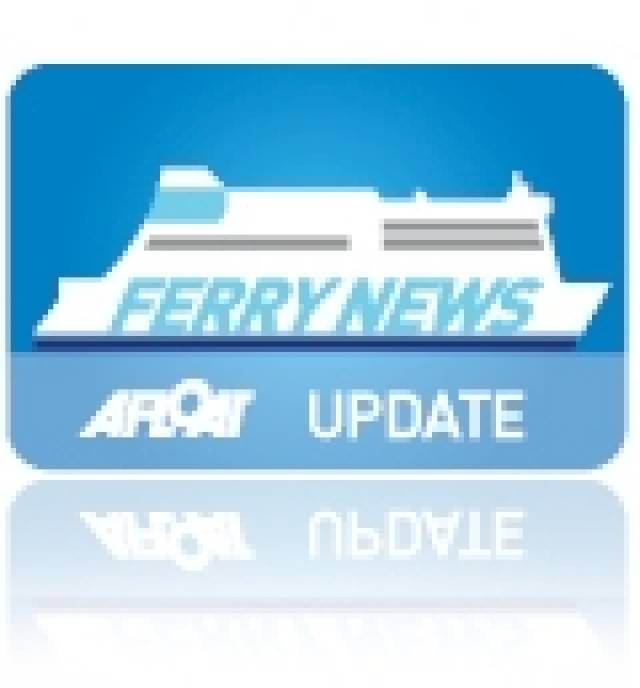#FerryOverhaul- The ro-pax ferry Ben-my-Chree which is undergoing a £1.6m overhaul and refurbishment is according to the Isle of Man Steam Packet on schedule to re-enter service next week.
The 12,500 tonne ship, which as previously reported on Afloat.ie, went to Cammel Laird, Birkenhead for dry-docking last month is to return on the Douglas-Heysham route next Wednesday.
For the last 16 years the Dutch built ferry has served the principle Manx link to England and this biennial overhaul refurbishment of passenger and crew areas also involves technical examination.
Marine interior refurbishment specialists Trimline, based in Southampton have refitted and revitalised a number of areas on board. This is reflected in public areas with a new layout in the Café bar, incorporating additional banquette seating, tables, tub chairs and walkway layout, plus new carpets and Amtico planks.
In the main lounge, new carpets and flooring have been laid, seats have been re-upholstered, artwork and signage updated, table tops replaced and new LED lighting has been installed.
Ben-my-Chree is scheduled to return to service in advance the busy TT Races. In her place on the Manx capital-Lancashire route, is the fast-craft passenger ferry Manannan. While freight duties, are been carried out by the 65-unit Arrow which the Steam Packet secured on a long-term charter.
Chief Executive Mark Woodward said: 'Ben-my-Chree undergoes a technical overhaul every two years and this year we have taken the opportunity to also enhance facilities for both passengers and crew.
'We have responded to feedback in this refurbishment, to make the public areas of the vessel even more comfortable as well as cleaner and brighter. It has been a significant investment for the company, but one which I hope will further improve the on-board experience.'































































